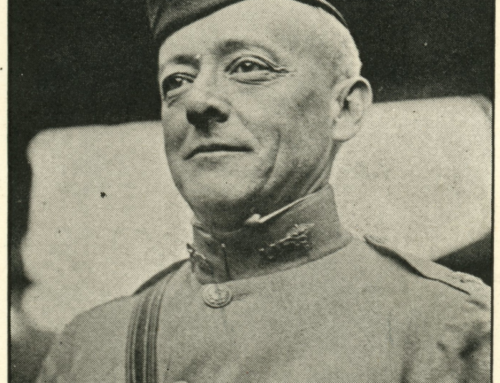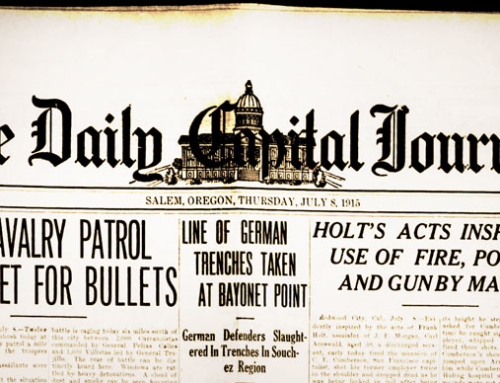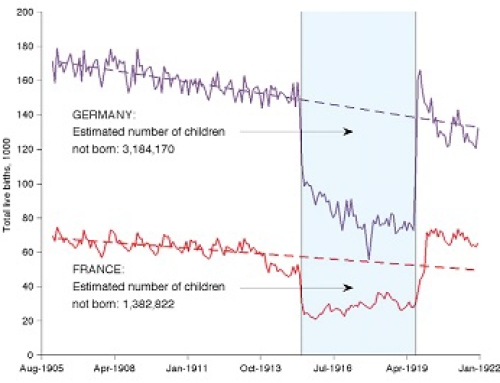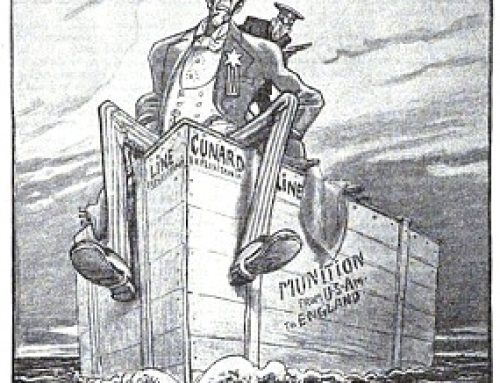By Richard van Pelt, WWI Correspondent
“How’s the weather, Jeeves?”
“Exceptionally clement, sir.”
“Anything in the papers?”
“Some slight friction threatening in the Balkans, sir. Otherwise, nothing.”
–from Jeeves in the Springtime by P.G. Wodehouse
At 10:34 on the morning of 28 June, 1914, a Serbian nationalist assassinated the heir to the throne of Austria-Hungary and his wife during a state visit to the city of Sarajevo, Bosnia.
“Some slight friction threatening in the Balkans”on the last Sunday in June of 1914 led to a global conflict a month later. The war that began that summer reverberates down through history to this day in the form of events that might well not have otherwise occurred, or have taken a different form:
- Lenin, Stalin and the Russian Revolution occurred as a consequence of Russia’s defeat by Germany;
- World War II;
- The Balkan war of the 1990’s;
- Iraq;
- Syria;
- The process of decolonization during the 1960’s;
- The Viet Nam war
- The map of much of the Middle East and the existence of Israel, Lebanon, Syria, Iraq, Iran, Saudi Arabia and the Arabian Gulf states;
- The recreation of a Polish nation, of the Czech Republic, Slovakia, Croatia, Serbia, Montenegro, Bosnia, and Kosovo.
The British television series, Blackadder Goes Forth, satirically discusses the causes of the war:
Baldrick: The thing is: The way I see it, these days there’s a war on, right? and, ages ago, there wasn’t a war on, right? So, there must have been a moment when there not being a war on went away, right? And there being a war on came along. So, what I want to know is: How did we get from the one case of affairs to the other case of affairs?
Edmund: Do you mean “Why did the war start?”
Baldrick: Yeah.
George: The war started because of the vile Hun and his villainous empire-building.
Edmund: George, the British Empire at present covers a quarter of the globe, while the German Empire consists of a small sausage factory in Tanganyika. I hardly think that we can be entirely absolved of blame on the imperialistic front.
George: Oh, no, sir, absolutely not.
[aside, to Baldrick] Mad as a bicycle!Baldrick: I heard that it started when a bloke called Archie Duke shot an ostrich ’cause he was hungry.
Edmund: I think you mean it started when the Archduke of Austro-Hungary got shot.
Baldrick: Nah, there was definitely an ostrich involved, sir.
Edmund: Well, possibly. But the real reason for the whole thing was that it was too much effort not to have a war.
George: By Golly, this is interesting; I always loved history…
Edmund: You see, Baldrick, in order to prevent war in Europe, two superblocs developed: us, the French and the Russians on one side, and the Germans and Austro-Hungary on the other. The idea was to have two vast opposing armies, each acting as the other’s deterrent. That way there could never be a war.
Baldrick: But this is a sort of a war, isn’t it, sir?
Edmund: Yes, that’s right. You see, there was a tiny flaw in the plan.
George: What was that, sir?
Edmund: It was bollocks.
Baldrick: So the poor old ostrich died for nothing.
John Keegan in his World War I, opens his book with the best assessment of the war and why it remains important to this day:
The First World War was a tragic and unnecessary conflict. Unnecessary because the train of events that led to its outbreak might have been broken at any point during the five weeks of crisis that preceded the first clash of arms, had prudence or common goodwill found a voice; tragic because the consequences of the first clash ended the lives of ten million human beings, tortured the emotional lives of millions more, destroyed the benevolent and optimistic culture of the European continent and left, when the guns at last fell silent four years later, a legacy of political rancor and racial hatred so intense that no explanation of the causes of the Second World War can stand without reference to those roots. The Second World War, five times more destructive of human life and incalculably more costly in material terms, was the direct outcome of the First. On 18 September 1922, Adolf Hitler, the demobilized front fighter, threw down a challenge to defeated Germany that he would realize seventeen years later: “It cannot be that two million Germans should have fallen in vain… No, we do not pardon, we demand – vengeance!”
Though Bosnia was part of the Austro-Hungarian empire and the assassins were Austrian citizens, the motivation for the assassination involved the quest by many Serbians to enlarge the borders of Serbia to include all who could be identified as Serbian. To this day we do not know to what extent, if any, the government of the Kingdom of Serbia knew of or condoned the assassination.
2014 marks the centenary of World War I, The Great War, The War to End All War. Though far from Flanders Field, Marion County was home to immigrants whose home countries fought on both sides. Entente and Central Powers are represented in the 1910 census. The centenary offers us the opportunity to explore how war played out in one county.
The assassination triggered a crisis, not a war. This series of blog posts will follow the events leading up to war, the war itself, and how the war was reported to residents of Marion County.
Selected bibliography:
Christopher Clark, “The Sleepwalkers”(2012)Eric Hobsbawm, “The Age of Empire”(1989)
Eric Hobsbawm, “The Age of Extremes”(1996)
Max Hastings, “Catastrophe 1914: Europe Goes to War”(2013)
John Keegan, “The First World War”(2000)
Margaret MacMillan“The War That Ended Peace”(2013)
Barbara Tuchman, “The Guns of August” (1962) – also published as “August 1914”
The New York Times began publishing “Current History”in 1914. Copies are available at the Hatfield Library at Willamette University, and online. Links to the online versions for the first months of the war are listed below.
Current History: The European War. From the Beginning to March 1915. “Who Began the War, and Why?”
Current History of the European War JANUARY 9, 1915. What Americans Say to Europe
The New York Times Current History: the European War, February, 1915 The New Russia Speaks
Current History, A Monthly Magazine The European War, March 1915 Caldron of the Balkans







[…] presence was on the minds of the kaiser and those about him, if even merely “a small sausage factory in Tanganyika.” The editor shares with many at the time that Germans were by and large followers, content to […]